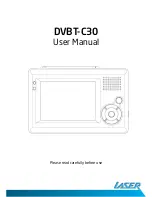
1
1. Construction of power generator
Two-cylinder
(BRIGGS
&
STRATTON-
COMMERCIAL POWER line)
In two-cylinder engines (fork-shaped), the
lubrication is carried out using pressure. The
engine has an oil pump that forces oil circulation -
when engine is stopped may cause the oil
pressure drop.
Two-cylinder engines are equipped with a
vacuum pumps for drawing fuel from external
tanks. FOGO® power generators are equipped
with two-cylinder engines are provided with tanks
of 45 litres, mounted on the frame above the
motor. All fuel tanks used in FOGO® generators
are equipped with fuel mesh filters to protect
against ingress of dust particles or other
contaminants into the carburettor.
ALTERNATOR
FOGO® generators operate with one- and
three-phase synchronous and asynchronous AC
alternators with different degrees of protection
rating (IP).
Single-phase alternators have a system of
voltage self-regulation provided by the inner
winding coupled in circuit with the capacitor. It
maintains voltage at the level of 10% with
uniform
load
distribution.
Three-phase
alternators have a system of voltage self-
regulation at the level of 6%, and those with AVR
at the level of +/-2% at uniform load. The three-
phase alternators may operate at uneven phase
load, reaching 10 % of rated power, while the
single-phase sockets of three-phase alternators
provide up to 40% of the generator rated power.
5
For some models, it is allowed to receive power
from single-phase sockets above 40% (see
technical data). When these values are
exceeded, the electrical parameters (mainly
voltage) of the alternator may deteriorate and
windings may overheat resulting in their
burning. For single- one and three-phase
alternators, momentary overloads exceeding
10% of rated power are allowed, but they
cannot be longer than 5 minutes in every 3
hours of device operation.
Single-bearing
design
and
the
flange
connection to the engine ensure quiet and safe
operation. The drive from the engine is
transmitted through a tapered connection and
threaded rod. Alternator housing is made of
light aluminium alloys. Winding of the rotor and
stator is insulated with a special epoxy varnish
and is rated in insulation class H.
Alternators used in FOGO power generators
have the protection degree of IP 23 or IP 54.
Applying the protection degree of IP 54 extends
the life of the alternator, as the bearings and
winding are perfectly protected against harmful
impact of external factors. IP 54 increases the
range of applications in high humidity and dusty
conditions.
Synchronous alternator (IP23)
- used for
inductive
receivers,
power
tools
and
construction equipment with engines of high
starting current. This alternator has windings
on the rotor and is self-excited by capacitor
that collects the remaining energy from
residual
magnetization
or from
additional
excitation system consisting of the magnetic or
electronic regulator. Cooling of these alternators
is carried out mostly by forced air circulation in
their interior (direct cooling of windings).
Synchronous alternator IP54
Synchronous alternators in special versions are
equipped with electronic voltage regulators (AVR)
with controlled voltage and current of all three
phases. In these alternators the impact of heavily
loaded phases on the stability of a phase with a low
load is very small. AVRs ensure voltage stability of
(+/- 2%) for SDI alternator (+/- 1%). These
generators may operate at uneven phase load,
reaching 10% of rated power, while cooling is
carried out by forced air circulation in the slots
outside of the generator.
Asynchronous alternator IP54
This alternator is highly durable and transfers
no current to the moving parts through contacts,
which eliminates arcing and wearing of
brushes
. The rotor has no visible windings, it
uses a cage made of steel laminations isolated
from each other with the addition of silicon.
For single- one and three-phase
alternators, momentary overloads
exceeding 10% of rated power are
allowed, but they cannot be longer
than 5 minutes in every 3 hours of
device operation.







































